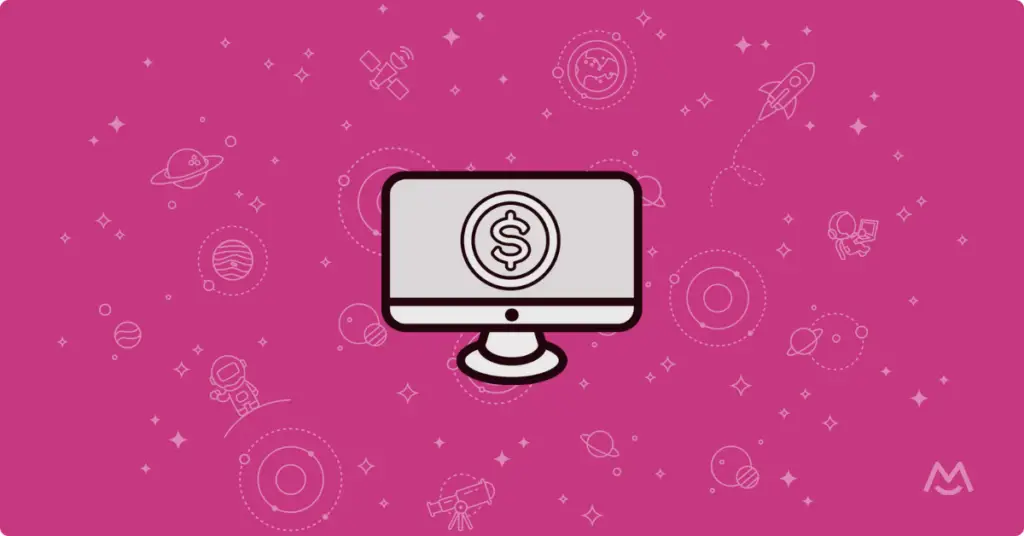Choosing your pricing can be a stressful part of starting a membership business. But, it doesn’t have to be! The focus should be on picking prices that are a good enough guess for now so you can move on to actually signing up real customers. Your pricing will likely change in the future, so don’t let yourself get stalled at this step.
Here are five simple steps to finding the perfect price for your membership:
Don’t offer too many options
The more products/services you have (i.e. variables), the harder it will be for you to determine what is and isn’t resonating with your initial customers. If you’re just launching, you don’t want to offer too many products or services (something we talk through more in our article on finding your membership idea). This is just phase one, so try and keep the number at launch between one and two. Everything you do will evolve and change in the future, and you’ll likely provide additional membership products or services. For now, you simply need to determine if you have product market fit (i.e. an increasing number of customers happily paying you to solve their problems).
Most people’s urge is to provide way too many services when launching because we’re desperate for customers and want to appeal to everyone so no sales are lost. But the problem with this is when you appeal to everyone, you appeal to no one. You want to offer a very specific service to your very specific customer niche that solves their most important problem(s). This is the best way we’ve found to get traction and begin your business journey.
Choose the correct charge interval
Before you decide what your business model will be and how much you’re going to charge, you need to take a step back and consider your customer niche. Yes, we all want a steady flow of recurring revenue, but the way you make that a reality has to be considered from your customer’s point of view.
First of all, ask yourself, “Am I actually providing value each and every month for my customers?” If not, you probably shouldn’t do a recurring charge.
Are you providing most of the value upfront with diminishing returns? If so, you may want to consider a one-time charge or a limited number of charges.
Will it take customers a while to actually get value and be successful with your product? If so, you should probably offer a free trial. Nobody wants to pay for something if they aren’t getting any value from it yet.
Because the charge interval is essential to properly pricing your membership, MemberSpace offers various payment options to fit your needs: Free (no payment), One Time Payment (e.g. $100 once), Multiple Payment (installments, e.g. 3 payments of $100), and Recurring Payment (subscription, e.g. $100 every month ongoing).
For multiple or recurring payments, you’re able to set a custom charge interval in days, weeks, months, or annual — whichever makes the best sense for your membership content type, and the value your customer will receive from it.
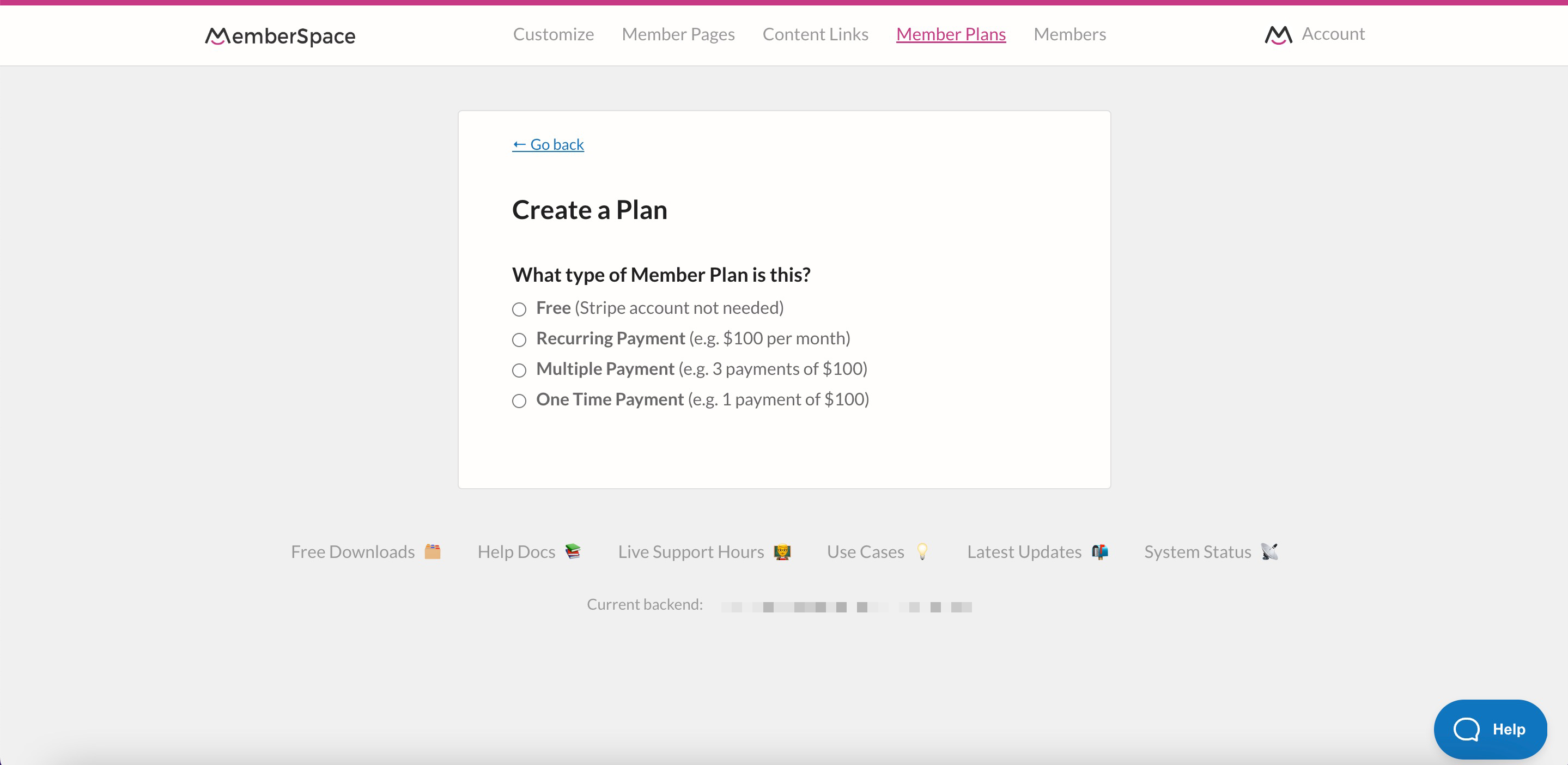
After you’ve settled on your charge interval, let’s move on to your pricing amount.
Choose a sustainable membership price
In our experience, most people are undercharging for their products. Most of us are scared that if we charge too much, people won’t buy what we’re selling. But most of the time people don’t buy what we’re selling because it’s not solving a deep enough problem — not because of price. People are predictably irrational when it comes to price. If you have a solution to a major problem for someone, it usually won’t matter if it costs $500, $600, or $750.
As a rough guideline, we recommend you charge at least $30/month on average. If your charge interval is not monthly recurring then we recommend you charge at least $360 one time (i.e. $30 x 12 months) or split it into multiple payments (i.e. three installments of $120 each).
The guideline is based on the idea that if you want to have an actual business, it needs to be sustainable and scalable to a certain point before you have to hire other people. If you can’t make a living from your business doing most of the work yourself, you’re likely charging too little.
We also recommend you focus on bootstrapping your business. In other words, you run the business based on the revenue the business generates as opposed to seeking outside funding (friends, family, venture capital, etc). When you run a business using outside funding, you are playing with other people’s money which is always easier to spend than your own. Outside funding can also mask inherent problems in your business since any issue that comes up can usually be solved (in the short term) by throwing money at it. By using only your own money, you create a constraint for yourself which forces you to find and retain customers. If you can’t find and retain customers, then you don’t have a real business, and no amount of outside funding is going to help you.
Strive for a realistic goal
You only need 200 customers paying you $30/month for a year to generate revenues of $72,000. And obviously, the more you charge, the fewer customers you need to achieve the same revenue.
The goal of getting 200 customers sounds attainable to most people. It’s not a huge number like 1,000. If you can get to 10 customers, you can get to 100. If you can get to 100, you can get to 200. It feels like a realistic number.
If you’re trying to be an entrepreneur to get rich quickly, you’re in the wrong game. It takes years (approaching a decade for many) to get their business to a point of profitability where the owners are generating their desired salary.
Don’t set unrealistic expectations for yourself and then get disappointed after a year that you’re not the next Facebook. You’ve likely never even heard of most successful entrepreneurs. They fly under the radar and generate healthy salaries for themselves after years and years of evolving their business. They are not the unicorn businesses you read about in magazines and newspapers.
Don’t strive to be a unicorn, strive to be someone who can work the number of hours per week you’d like to work and make the take-home pay (after taxes and expenses) you’d like to make. If you can do that, you’ve won the game (i.e. work/life balance), and it’s a goal that isn’t as overwhelming as trying to make the Inc. 500 list of fastest-growing companies or generate $1,000,000 in sales.
Keep it simple and easy to understand
We suggest keeping your membership pricing as simple as possible as you begin. This introduces fewer variables for you to choose and test. And, simple pricing is also easier for your members to understand!
However, if you do need advanced payment options for your particular product or customer niche, MemberSpace offers additional ways to customize your pricing:
-
Offer a free trial
If any of your payment options should include a free trial, you can determine how long the trial should last.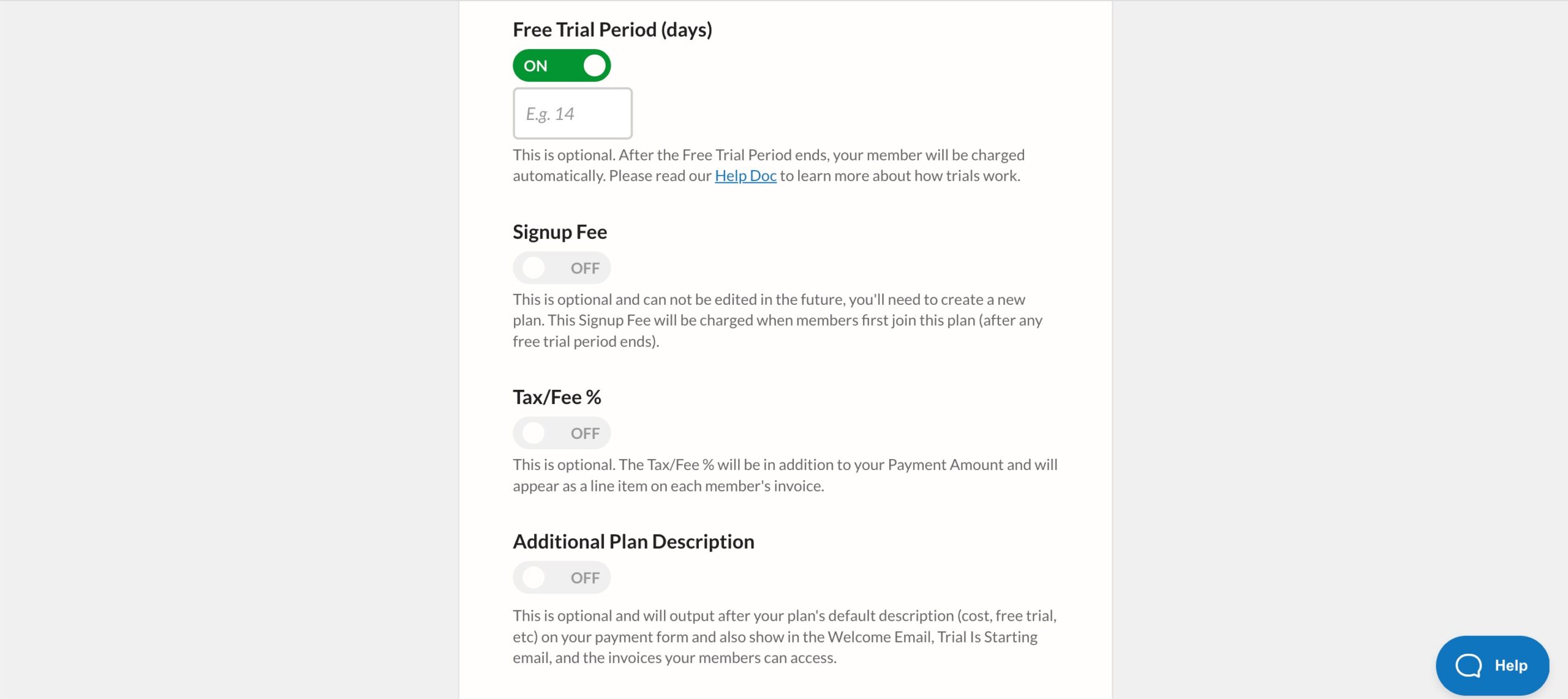
Add a customized free trial period to any of your membership pricing options -
Require a signup fee
You can choose to add an initial signup fee to a multiple or recurring payment.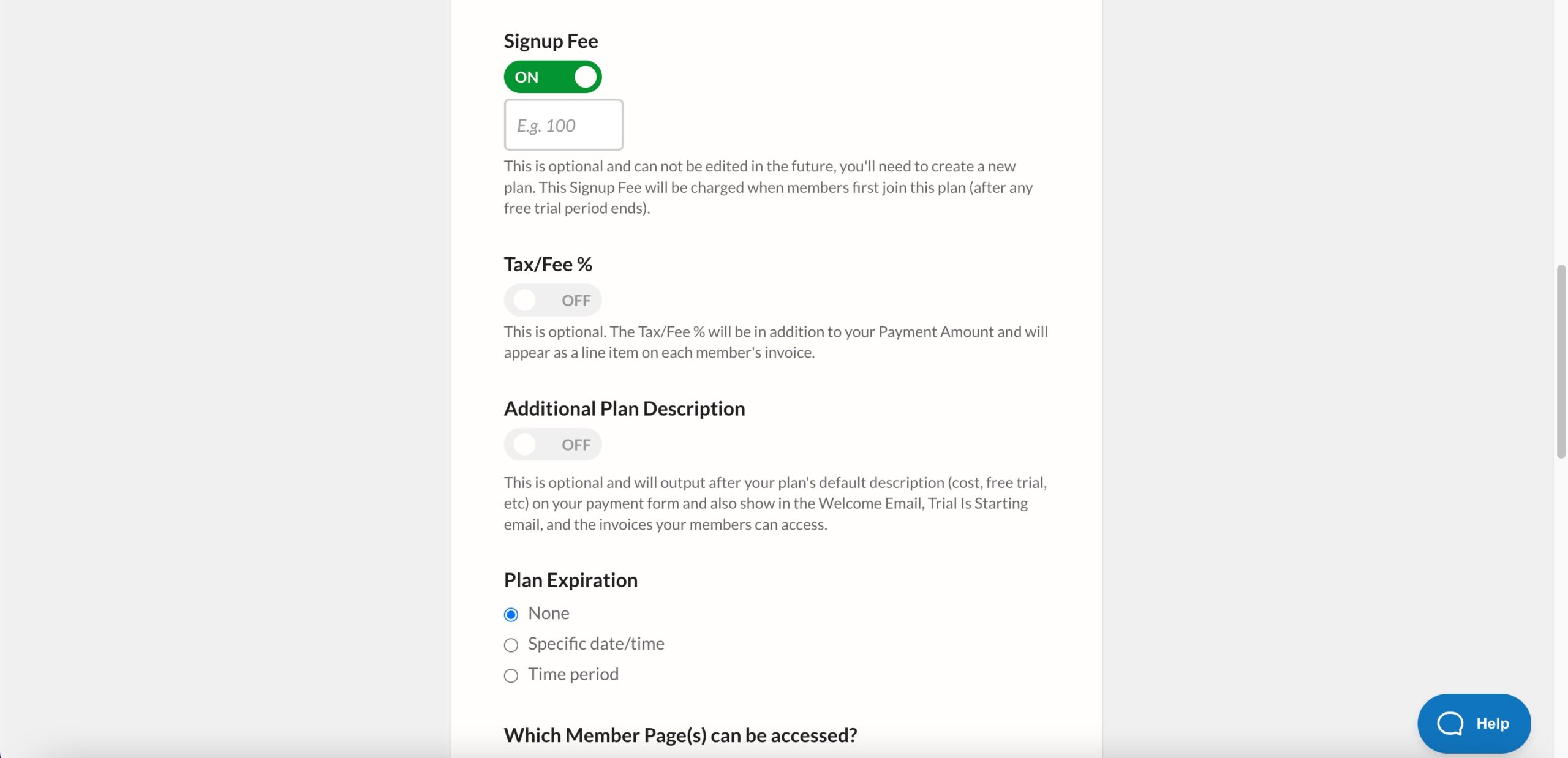
Include a signup fee with your membership pricing options - Set a specific billing date
If your membership requires a specific billing date, you can set one for recurring (subscription) payments.
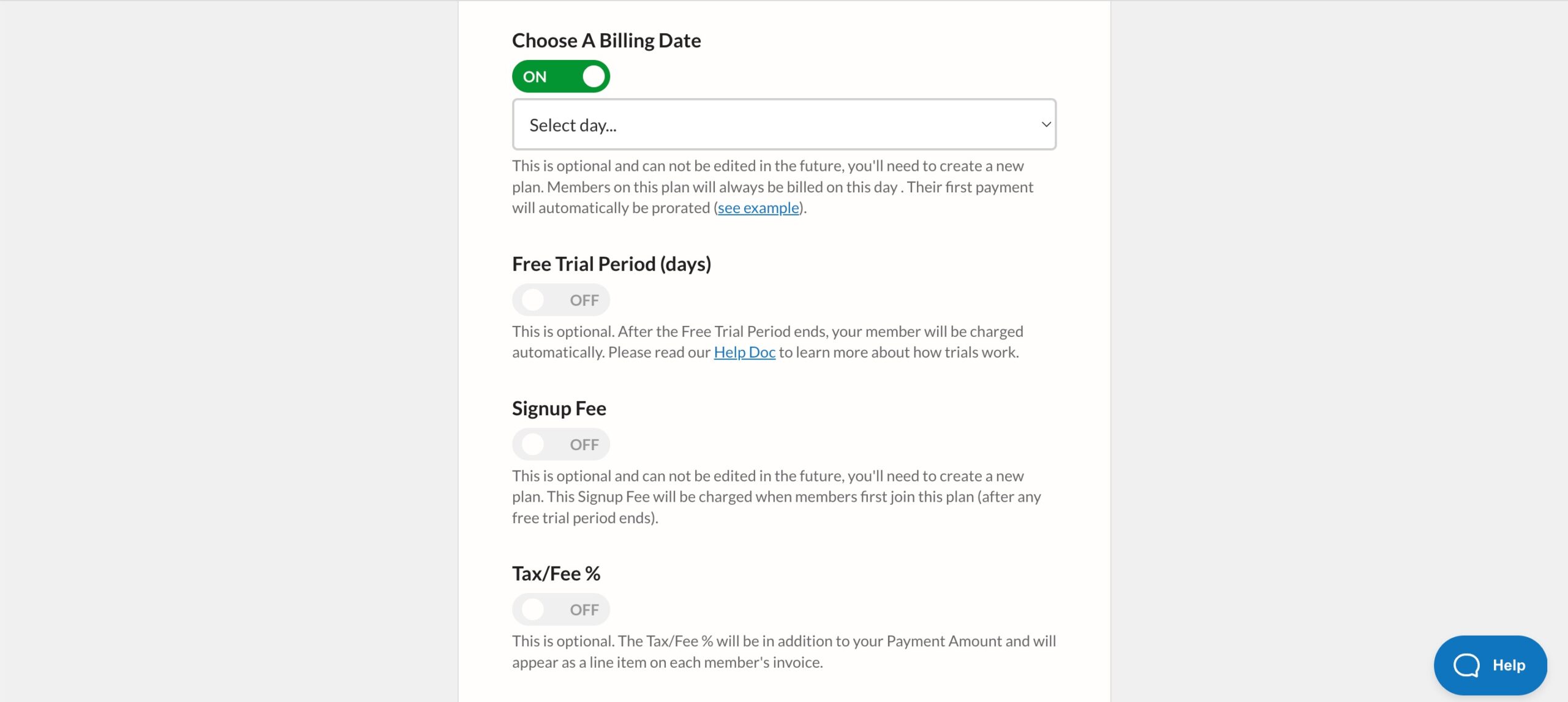
Set a custom billing date for any of your membership pricing options
Choosing the right membership site pricing can seem intimidating, but don’t let this step keep you from moving forward. Choose what you think will work best for you and your audience (future customers), and if you need to make changes along the way, that’s completely okay! Most businesses make adjustments to their pricing and other aspects as they grow and continually work to improve for their customers. Focus on providing valuable content, products, or services to your members, and don’t let the details become overwhelming.
Regardless of your pricing structure and how you choose to sell your expertise, MemberSpace’s team of experts and flexible membership software can provide you with the tools you need to succeed. Learn more and get started building your membership for free.




